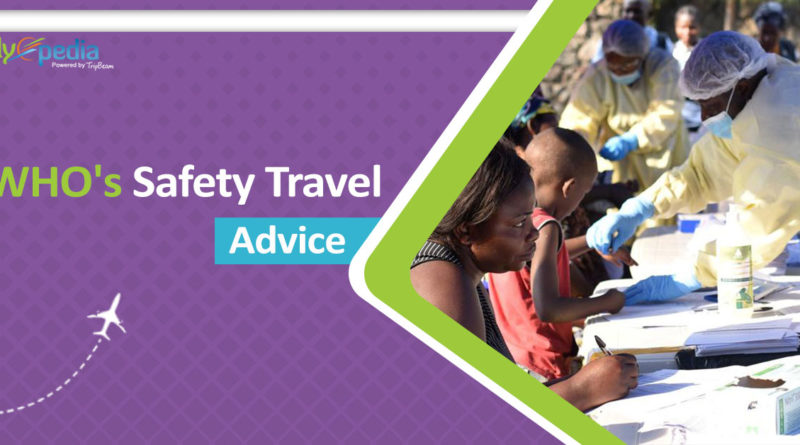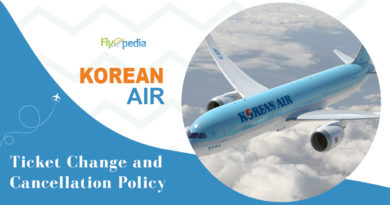WHO’s Coronavirus Prevention Guidelines for Safe Travel
To make safe travel for all passengers countries will follow World Health Organization guidelines for repatriating nationals.
If you have travel plans and worried about your health, then this article will comfort you.
WHO, central governments, airports, airlines, health and other organizations are working together for eliminating all risks.
So, find out about WHO’s travel-safe guidelines.
Before Departure
The whole process of transporting passengers safely is important. Steps taken prior to departure are crucial too.
Therefore, everyone in the aviation industry is leaving no stone unturned.
Since the health safety and well-being of passengers is the top priority, strict preventive measures are being exercised.
This is to make sure the passenger book for airline tickets without any unnecessary fear.
1. Effective Communication:
All the concerned authorities such as governments, airports, airlines, etc. are maintaining strong communication. This is critical to avoid any last-minute changes in your travel.
The flight itineraries are planned with pinpoint precision to reduce your time at the airports and on board, especially for those traveling on international air flight tickets.
2. Medical Personnel and Supplies:
Necessary medical staff must be on board. The airline authorities will ensure personnel has sufficient and appropriate PPE (Personal Preventive Equipment). Medical supplies will be enough for the passengers onboard.
3. Training Non-Medical Staff:
The remaining crew will be instructed and trained to handle any irregularities. The crew is briefed about the signs and flulike symptoms to detect and immediately isolate any suspected passenger.
4. Early Detection:
However, even before passengers take their position on the aircraft they will be screened using advanced gear.
Apart from health screening such as temperature checks, a questionnaire will be used for early detection. The results will be communicated to the country of the passenger.
Precautions Onboard
Being vigilant during flight is very important. Therefore, WHO asks the airlines to follow the below:
1. Seating:
The staff will keep track of every passenger on board by clearly mapping out their location. This assists in locating potentially ill passengers and isolating them at once.
Everyone in close proximity to the passenger will be screened upon arrival. This includes passengers sitting up to two rows from the ill passenger.
2.Ground-based Advice:
In case the crew confirms a case on the aircraft, they inform and follow instructions from the ground-based medical crew.
, pilots may consider diverting the ill passenger to the nearest point of arrival.
In the case of Respiratory Ailments
The World Health Organization has urged the airlines to take the following measures, in case they detect someone with a respiratory ailment.
You can check with your airline if they are following these precautions before booking flight tickets.
This will also help in containing the spread.
1. HEPA Filters:
Uninterrupted functioning of HEPA or High-Efficiency Particulate Air filtration system is necessary. Also, this will remove all the airborne particulates or microorganisms.
2. Look after the Passenger:
Select a single crew member to take care of the ill passenger. WHO recommends a staff member who has previously communicated with the passenger.
3. Observe PPE:
While interacting with affected passengers take necessary precautions such as wearing PPEs like facemasks, gloves, and maintain personal hygiene.
4. Vacate Adjacent Seats:
All the seats adjoining the affected passenger must be unoccupied.
5. Passenger Locator Form:
Staff must collect information from the passengers sitting in close proximity to the ill passenger.
Further, record the same in a Passenger Locator Form to plan further course of action.
6. Cough Etiquettes:
The patient must adopt appropriate cough and sneezing etiquettes. Contain the germs from spread with the help of disposable tissue.
If the patient refuses to wear a facemask, passengers in close proximity should. Also, the staff must deal cautiously while handling blankets, towels, trays, and other such items and surfaces that came in direct contact with ill passengers.
7. Environmental Cleaning:
In the rare events of spills such as blood, secretions, etc. adhere to proper environmental cleaning and spill management.
Moreover, handle all waste according to regulatory guidelines.
8. General Aircraft Declaration:
In the general aircraft declaration form, register all the health concerns and other onboard information under the health segment.
The staff can submit this to the concerned authorities at the points of entry.
After Arrival
Upon arrival, the following protocol must be maintained:
1. Screening:
WHO suggests that temperature screening alone is insufficient. Therefore, there are other accompanying precautionary methods. These include:
- Messages:
Transferring health messages through terminal screens in the arrivals area, or by placing signage at the airports is taking place.
Further, airports across the world are also distributing flyers and brochures. These include information about signs and symptoms, seeking medical care, and how to prevent passing on the disease.
- Questionnaires:
The authorities are collecting the necessary information by the means of a questionnaire.
Also, history of exposure, contact information, and other details that will help detect potential cases.
Final Thoughts: Advice to Passengers to Make TRAVEL SAFE
All of you that will travel or will honor flight ticket booking, must follow some precautionary measures too. Take care of the following points:
- Drink plenty of water
- Frequently wash hands with soap for 20 seconds at least
- Carry a hand sanitizer
- Don’t touch your mouth nose or eyes with dirty, unclean hands
- Book airline tickets online and perform web check-in, instead of using airport counters and self-check-in kiosks
- Use disinfectant wipes on all hard surfaces and high-contact areas on the airplane and at the airport
- Stay away from people displaying flulike symptoms
- If you are experiencing flu-like symptoms report it to a medical health supervisor
- Self-isolate if you think you are ill
- Avoid non-essential safe travel to affected areas




